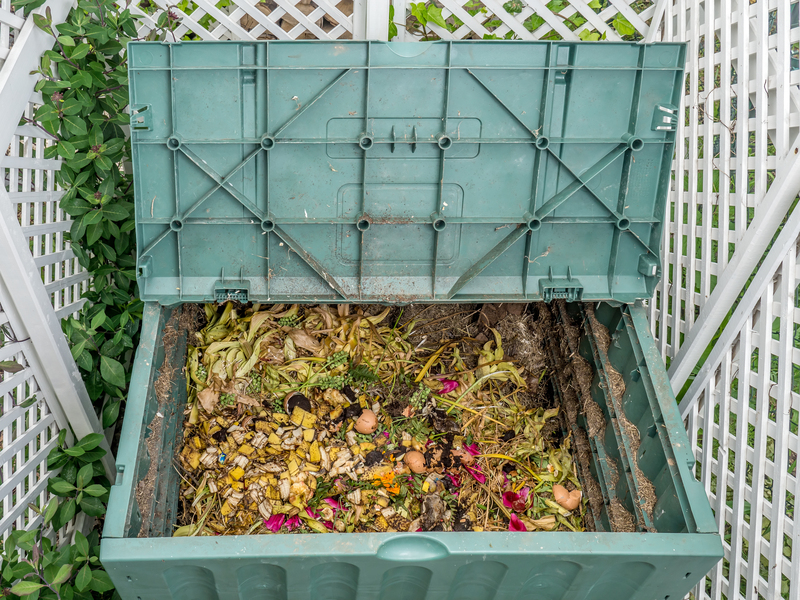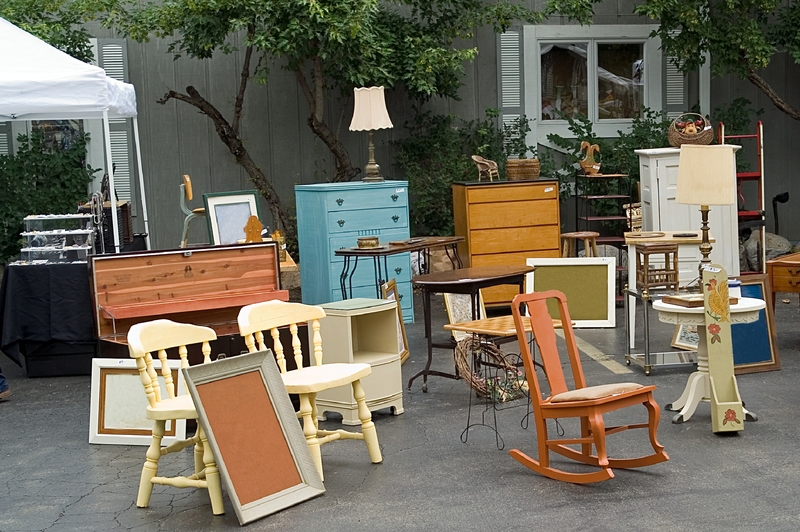Recycling Tips for Pots and Pans: Give Them a Second Chance
When your favorite skillet loses its non-stick surface or your saucepot ends up with a dent too many, don't rush to toss them in the trash. Giving old pots and pans a second life is not just sustainable--it can be surprisingly simple and rewarding. In this comprehensive guide, we'll show you smart, eco-friendly, and creative recycling tips for pots and pans, helping you minimize waste while maximizing value.
Why Recycling Old Pots and Pans Matters
Millions of pots and pans are thrown away every year, ending up in landfills where they take decades to break down. Recycling cookware saves valuable resources and reduces environmental impact. From aluminum and stainless steel to copper and non-stick surfaces, your cookware is made from materials that can often be reused or repurposed.
- Reduces landfill waste
- Saves energy by reusing metals
- Minimizes the need for raw material extraction
- Encourages creativity through upcycling
Whether your pots and pans are beyond repair or you simply want to update your kitchen collection, recycling offers a practical path forward.

How to Identify If Your Pots and Pans Are Recyclable
Before you start recycling your old cookware, it's essential to determine which pieces can be recycled and how. Cookware comes in various materials, each with specific recycling processes:
Materials Commonly Found in Cookware:
- Aluminum (lightweight, rust-resistant)
- Stainless Steel (durable, often magnetic)
- Copper (usually with a steel or tin lining)
- Cast Iron (heavy, can be restored)
- Nonstick Coatings (like Teflon--often restricts recycling)
- Enamel or Ceramic Coatings
Tip: Use a magnet to check for steel; if it sticks, your pan is likely steel or cast iron and recyclable as scrap metal.
What About Handles, Lids, and Non-Metal Parts?
Handles and lids made from plastic, wood, or silicone can complicate recycling. It's best to remove these parts where possible before dropping off your items for recycling. If the lid is made of glass, it should be recycled separately, following your local glass recycling guidelines.
Where Can You Recycle Old Pots and Pans?
Not all curbside recycling programs accept cookware, so it's important to find the right facility. Here's how you can proceed:
1. Local Scrap Yards
- Scrap metal centers are the best places to recycle pots and pans, especially those made from aluminum, steel, or copper.
- Call ahead to check if they accept pots and pans, and if non-metal parts need removal.
2. Municipal Recycling Programs
- Some areas accept metal cookware in their curbside recycling bins--but always check with your city's program.
- Items with a nonstick or ceramic coating are less likely to be accepted.
3. Retail Take-Back Programs
- Certain kitchenware stores or big-box retailers offer recycling drop-off programs for old cookware when you buy new items.
4. Donation Centers
- If your pans are still usable, donate them to thrift stores, homeless shelters, or community kitchens.
Creative Ways to Repurpose Old Pots and Pans
Recycling isn't just about melting down metal; it can also be about upcycling and reusing creatively. Here are fun and practical ideas to give your old pots and pans a second chance:
1. Vintage Planters
- Drill drainage holes in the base and fill with soil and your favorite flowers or herbs.
- Cast iron and large pans work especially well for rustic outdoor gardens.
2. Wall Art and Organizers
- Turn pans with interesting shapes or patinas into quirky kitchen wall decor.
- Add hooks to the handles for unique utensil holders or racks.
3. Bird Baths and Feeders
- Mount larger, shallow pans on a stand or hang with sturdy wire for a backyard wildlife oasis.
4. Candle or Soap Holders
- Small pans make excellent bases for homemade candles or soaps, perfect for gifts.
5. Upcycled Clocks
- Add clock mechanisms to a lightweight pan for a vintage kitchen clock--stylish and sustainable!
Step-by-Step Guide: How to Prepare Pots and Pans for Recycling
Proper preparation ensures your items will be processed and recycled efficiently.
- Remove Non-Metal Parts: Detach handles, knobs, or rubberized sections. Use a screwdriver or pliers as needed.
- Clean the Cookware: Wash off any oil, food residue, or dirt. Recycling centers often require items to be reasonably clean.
- Sort by Material: Separate aluminum, steel, copper, or cast iron for easier processing.
- Contact Facilities: Call ahead or check online for your local recycling or scrap yard requirements.
Special Considerations for Nonstick, Ceramic, and Specialty Cookware
Not all pots and pans can go into metal recycling bins by default. Nonstick and ceramic coatings can complicate matters because they may contain chemicals that aren't safe for standard metal recycling. Here's what you should know:
- Nonstick Pans: If the Teflon or other coating is badly damaged, most facilities will not accept it. Look for special recycling programs or opt for creative upcycling instead.
- Ceramic or Glass Lids: Not accepted in all recycling streams--check with your local glass recycler.
- Cast Iron: Highly recyclable and often reusable after re-seasoning; consider passing it on to cast iron enthusiasts.
How to Prolong the Lifespan of Your Current Cookware
While recycling is important, reducing waste starts with making your cookware last longer. Here are some tips to get more life out of your pans:
- Season cast iron pans regularly to prevent rust and maintain nonstick properties.
- Always use wooden or silicone utensils on nonstick surfaces.
- Avoid high heat with nonstick and ceramic pans to prevent warping or chemical release.
- Clean promptly and gently--don't use harsh abrasives.
- Store pans properly to prevent damage to coatings or surfaces.

Frequently Asked Questions About Recycling Pots and Pans
Can I put old pots and pans in my recycling bin?
This depends on your local recycling program. Many curbside programs do not accept cookware, especially if it's coated or has non-metal parts. Always check with your local provider or visit a scrap metal recycling center for the best results.
Are nonstick pans recyclable?
Most nonstick pans cannot be recycled through traditional means due to their chemical coatings. Some specialty recycling companies may accept them after the coating is removed, but in most cases, creative upcycling is the best option.
What should I do with pans that are still functional?
Donate them! Thrift stores, community centers, and shelters often welcome gently used cookware. Reusing is always better than recycling for items still in good condition.
Can I make money recycling old cookware?
Yes, some scrap yards pay for metals like aluminum or copper. While most pots and pans are worth only a small amount, it's a bonus for recycling responsibly.
Conclusion: Embrace Sustainable Cooking with Responsible Cookware Recycling
Recycling tips for pots and pans aren't just about reducing kitchen clutter--they're about making the most of what you have in a sustainable way. Whether you choose to recycle for scrap, upcycle creatively, or donate to those in need, each action helps save resources and the planet. Next time you consider disposing of an old pan, remember: There's almost always a second chance waiting--sometimes in the most unexpected and rewarding places!
Join the movement for a greener kitchen. Start recycling your old cookware today and inspire others to give their pots and pans a second chance!
```